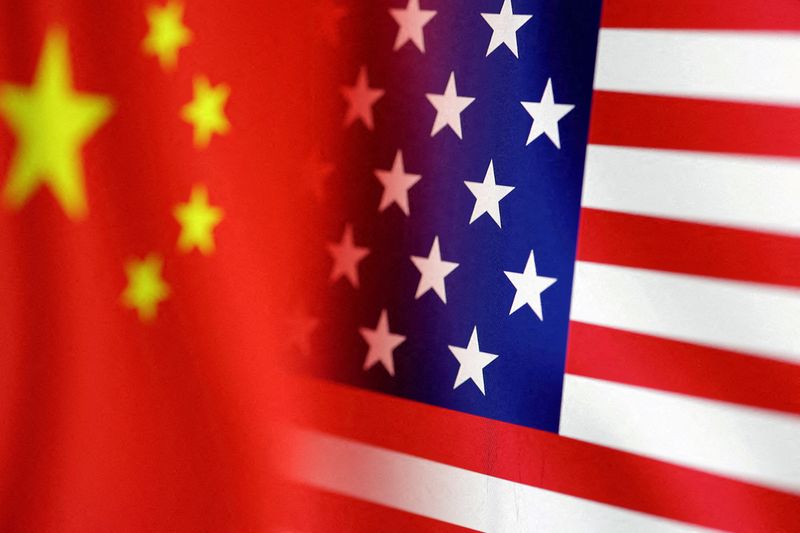Nvidia among investors in xAI’s $20 bln capital raise- Bloomberg
Investing.com -- The Trump administration has announced an additional 34% in tariffs on Chinese goods, a measure that comes in addition to the 20% hike implemented in February and March.
With this latest move, the weighted tariff rate the U.S. imposes on China will reach 65%, positioning it among the highest in the world.
“The U.S. tariff shock would be significantly higher and more pervasive than 2018-19,” Morgan Stanley (NYSE:MS) strategists led by Robin Xing said in a note.
“Besides the direct tariff shock on China’s exports to the U.S., the indirect impact would also be notable, as the U.S.’s pervasive tariff hikes on other trading partners would slow global trade,” they explained.
The current tariff levels are not just economic tools but are also tied to strategic objectives aimed at protecting sensitive industries and promoting domestic investment and production within the U.S.
“This implies the bar to clear for negotiations and tariff de-escalation is much higher,” strategists added.
They believe that any policy concessions from China may not be sufficient to ease the tariff levels, as the U.S. goals extend beyond immediate economic concerns.
In anticipation of the negative effects of the tariff shock, Beijing is expected to accelerate the rollout of its RMB2 trillion stimulus package, announced during the National People’s Congress (NPC).
However, Morgan Stanley suggests that even with potential additional policy support, such as national fertility support and expansion of consumer goods trade-in programs, these measures may only partially mitigate the impact of the tariffs.
As such, the firm sees a downside risk to its baseline GDP forecast of 4.5% for China in 2025.
